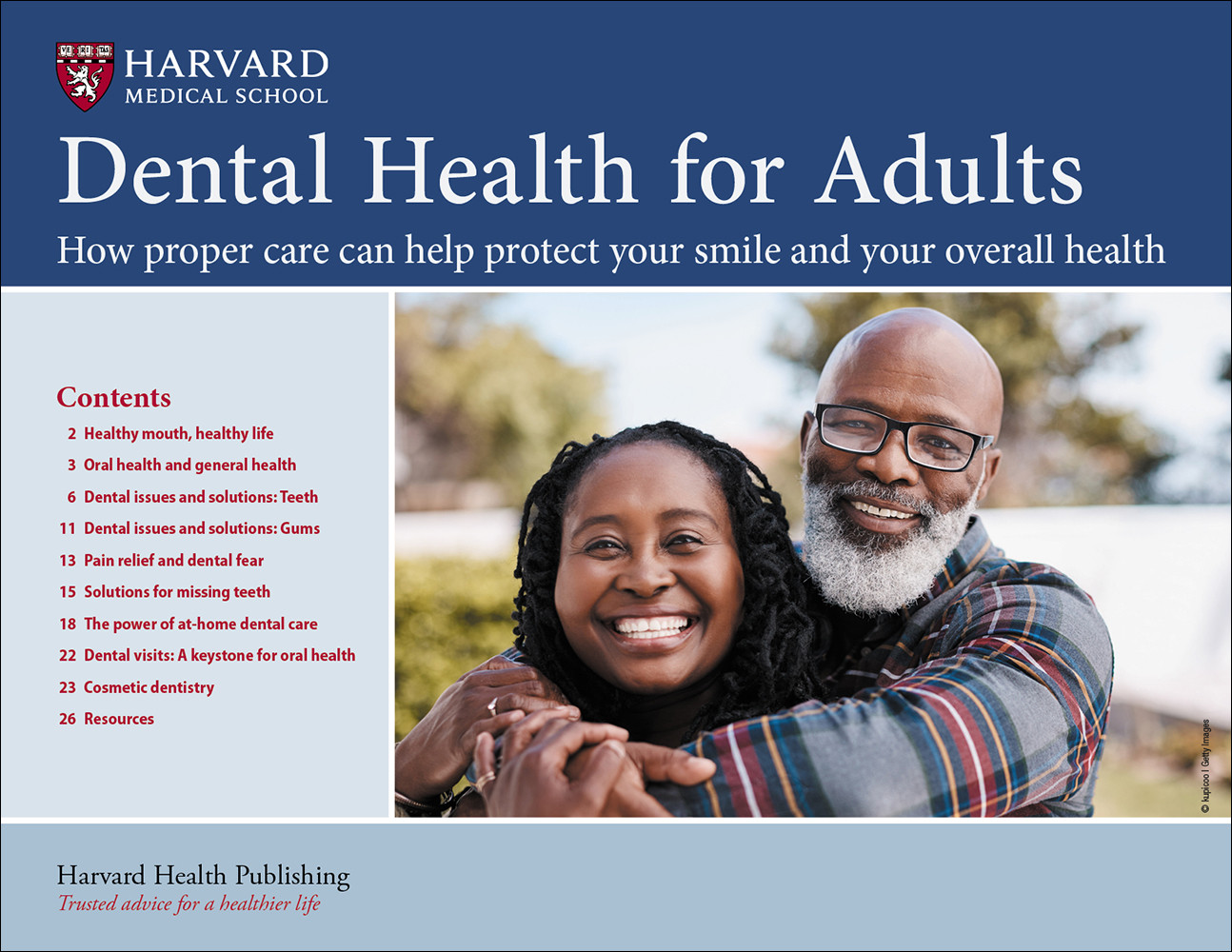Braces aren't just for teens
Even later in life, braces can bring multiple health benefits
- Reviewed by Anthony L. Komaroff, MD, Editor in Chief, Harvard Health Letter; Editorial Advisory Board Member, Harvard Health Publishing

Adolescence is the ideal time to fix crooked teeth or a poorly aligned bite (the way teeth come together when you close your jaws). But the teen years aren't the only time to get braces. A growing number of adults are turning to orthodontics, even in midlife and beyond.
Teeth and time
Although teeth seem like they're fixed firmly in place, they actually move throughout life. Over time, these tiny shifts can make a difference in your appearance or bite.
"Tooth loss for any reason, such as an accident or advanced gum disease, also causes teeth to change position, as neighboring teeth move into empty spaces," notes Dr. Sercan Akyalcin, head of the Orthodontics Department of the Harvard School of Dental Medicine.
These changes can lead to a smile that embarrasses you. Worse, they can cause the following health problems:
Malnutrition. If it's harder to chew efficiently, you may be less inclined to eat nutritious foods or eat as much as you should.
Increased risks for cavities and gum disease. "Crooked teeth are harder to clean thoroughly. Food can get trapped in them, increasing the chances for bacterial growth and chronic inflammation in the mouth. It's an open invitation for gum disease and tooth loss," Dr. Akyalcin says.
Chronic disease. Gum disease bacteria can get into the bloodstream and make their way to other parts of the body. The bacteria are known to cause infection in heart valves. There is also some evidence they may play a role in high blood pressure, diabetes, rheumatoid arthritis, osteoporosis, pneumonia, and even Alzheimer's disease.
Fixing crooked teeth or a misaligned bite helps ward off these problems. It can also create space for implants to replace missing teeth or serve as anchors for bridgework.
Straightening options
There are two main types of braces. One consists of a row of tiny brackets glued onto the teeth, on either the cheek side or the tongue side, and a wire that runs through the brackets to apply force. The force makes the teeth move gradually.
Brackets are made of metal or a tooth-colored material (ceramic or plastic) and can be customized to the exact shape of your tooth. "Tooth-colored brackets are more visually appealing, but are more likely to break than metal brackets," Dr. Akyalcin says.
The other type of braces consists of a series of aligners — thin, clear plastic molds that you wear on top of the teeth 22 hours per day. "We do a scan of your teeth and make a three-dimensional model of where we'd like them to end up. Then we create an aligner for each stage of the movement we want," Dr. Akyalcin says. "You get a new aligner every one or two weeks."
What to expect
Getting braces is a big commitment. Here's what's involved.
Time. The process may take 12 to 30 months for middle-age or older adults, depending on what you need and which type of braces you choose. "Both types can be used to move teeth. For major tooth movement, metal and ceramics do the job faster than aligners," Dr. Akyalcin says.
Discomfort. Braces don't hurt as much as they did years ago. "It's no longer a concern for many patients," Dr. Akyalcin says. "We have advanced materials and wires that generate light forces and allow movement at a comfortable pace."
Costs. How much you pay depends on where you live and how complicated your treatment is. Generally speaking, the range is $5,000 to $12,000. Medicare doesn't pay for braces, but some types of insurance pay for at least part of the process.
Maintenance. Both types of braces must be cleaned thoroughly each day. Cleaning braces installed on your teeth is more involved than cleaning aligners.
Are you a candidate?
People with certain underlying conditions are not good candidates for braces. Those conditions include osteoporosis, certain types of kidney disease, and uncontrolled gum disease.
Otherwise, there's no age limit to getting braces, and the results promote better health and self-esteem. "Orthodontic problems are social problems," Dr. Akyalcin says. "Braces provide the benefit of personal happiness and social well-being. If you have the motivation and the means, then go for it."
Image: © FG Trade/Getty Images
About the Author

Heidi Godman, Executive Editor, Harvard Health Letter
About the Reviewer

Anthony L. Komaroff, MD, Editor in Chief, Harvard Health Letter; Editorial Advisory Board Member, Harvard Health Publishing
Disclaimer:
As a service to our readers, Harvard Health Publishing provides access to our library of archived content. Please note the date of last review or update on all articles.
No content on this site, regardless of date, should ever be used as a substitute for direct medical advice from your doctor or other qualified clinician.
















